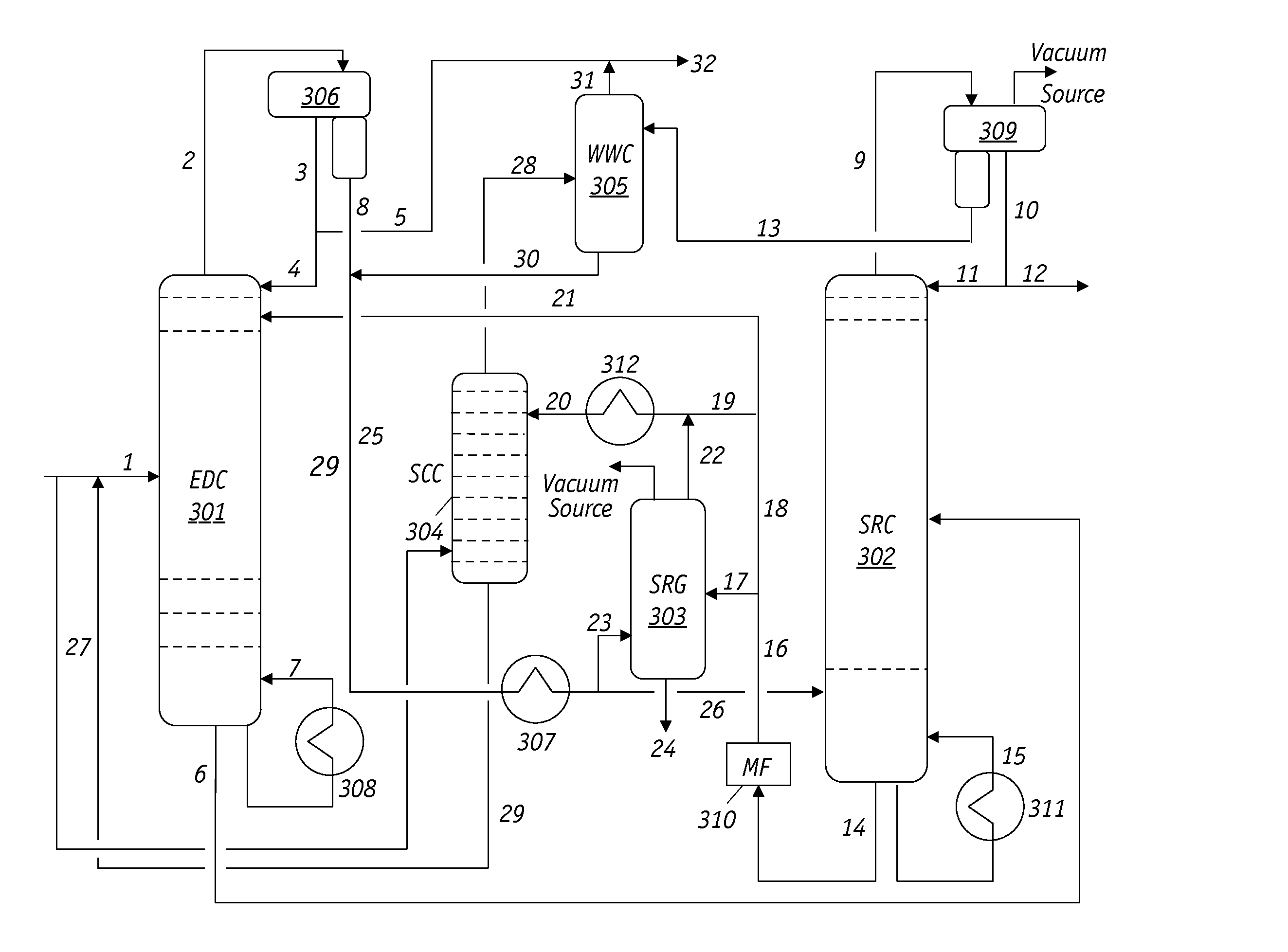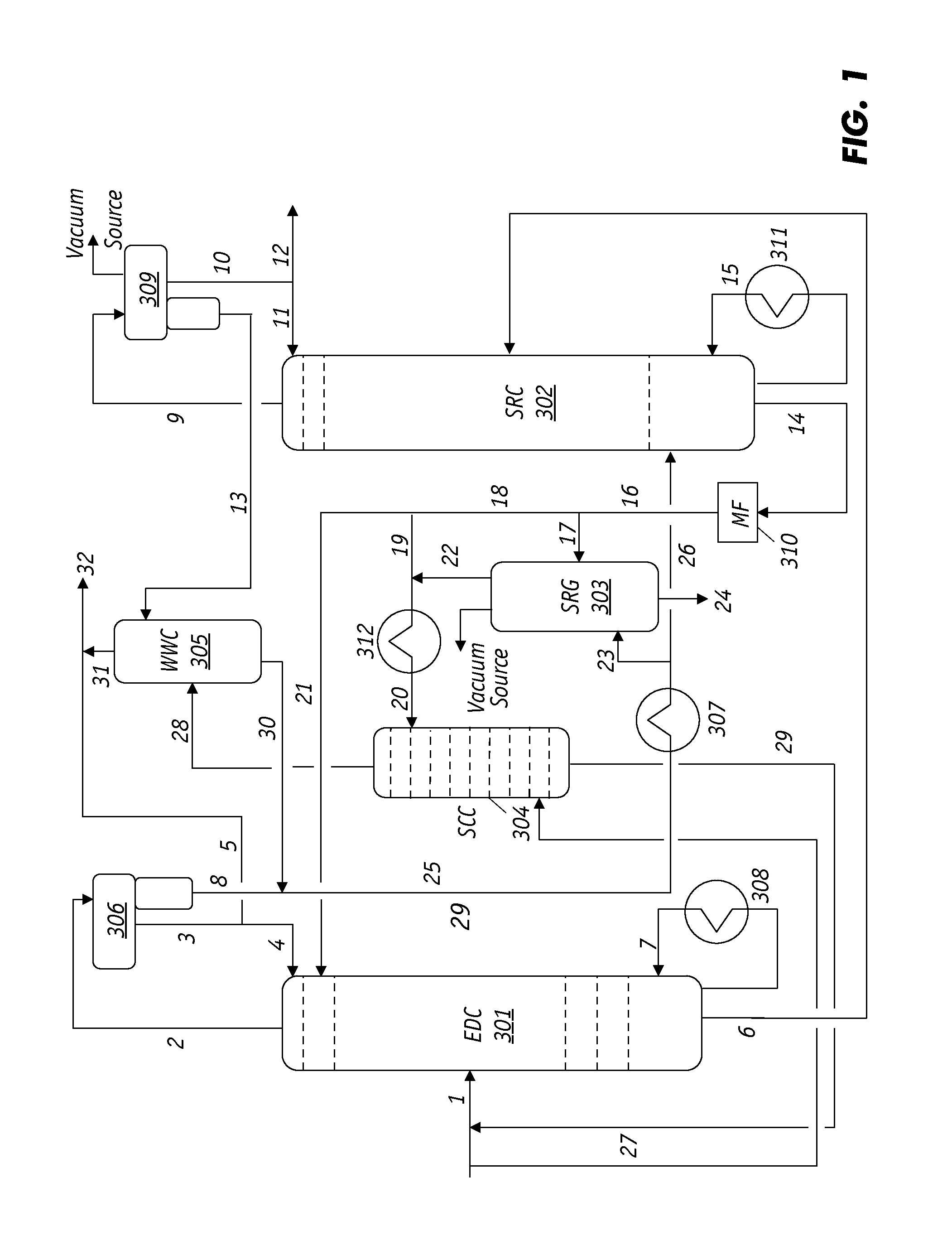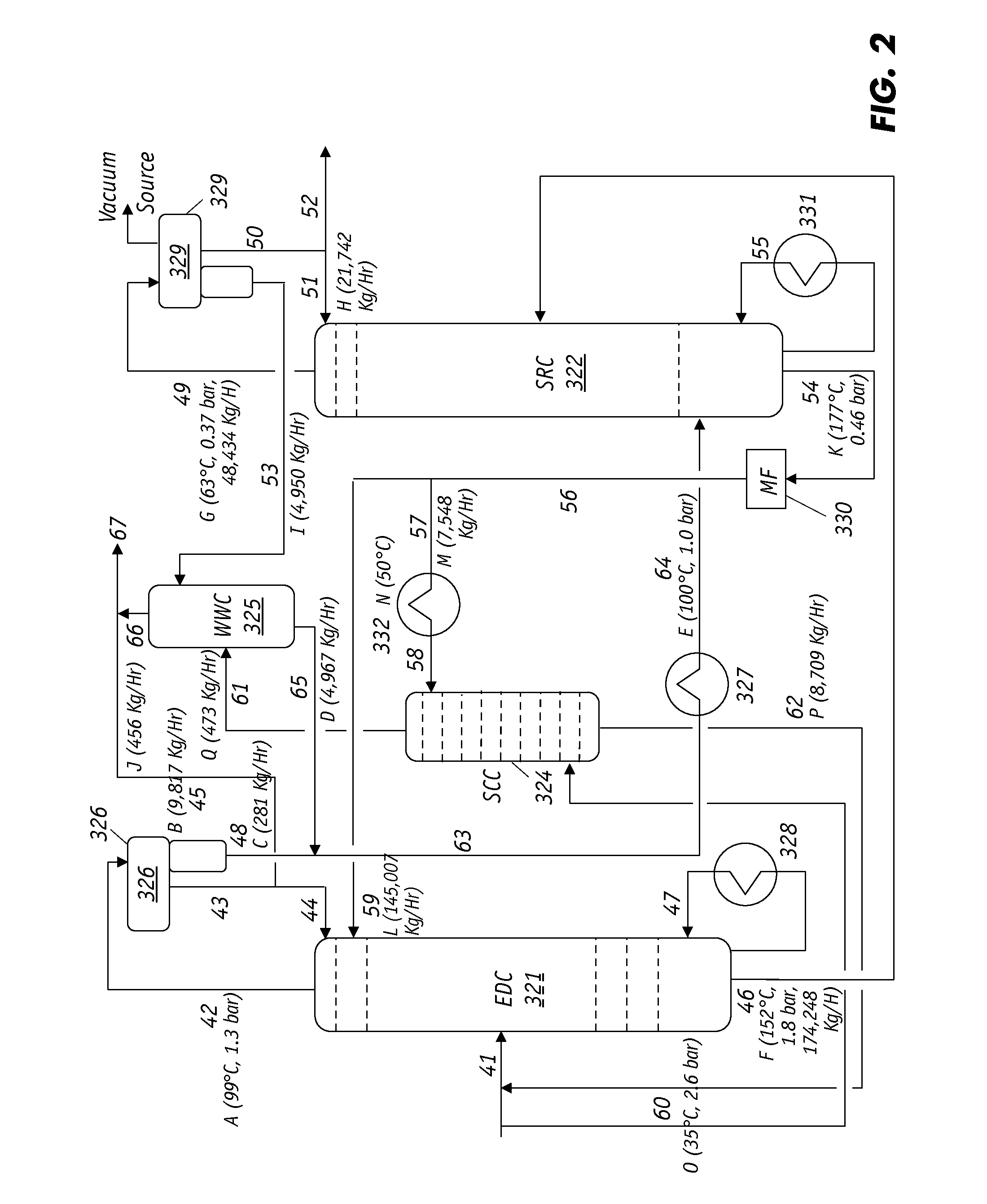Regeneration of Selective Solvents for Extractive Processes
a selective solvent and extractive technology, applied in the direction of extraction purification/separation, separation processes, azeotropic/extractive distillation, etc., can solve the problems of process inoperable, low solvent performance, and significant level of heavy hcs in the feed stream, so as to reduce loading requirements and facilitate operation
- Summary
- Abstract
- Description
- Claims
- Application Information
AI Technical Summary
Benefits of technology
Problems solved by technology
Method used
Image
Examples
example
[0054]Computer simulation modeling of extractive distillation processes for recovering aromatic HCs using representative commercial data demonstrated the feasibility of the present invention. Specifically, this example demonstrates that detectable heavy HCs in the lean solvent generated from the bottom of the SRC are displaced from the lean solvent by the HC feedstock that is fed to the EDC or LLE column. Referring to the process shown in FIG. 2, approximately 39,097 Kg / Hr of HC feedstock, containing 55.4 wt % C6-C8 aromatic HCs at 112° C. and 5.0 bar, is fed to the middle portion of the EDC via line 41, while roughly 145,007 Kg / Hr of sulfolane solvent at 95° C. and 2 bar containing 0.4 wt % water in stream 59 is fed to near the top of the EDC, below the overhead reflux entry point from line 44, for extracting the aromatic HCs in the EDC. The mass flow rates of species in selected streams are summarized in Table 1.
TABLE I(Flow Rate: Kg / Hr)Stream No.415945465860616267nC51020102005.42...
PUM
| Property | Measurement | Unit |
|---|---|---|
| Polarity | aaaaa | aaaaa |
| Magnetic field | aaaaa | aaaaa |
| Selectivity | aaaaa | aaaaa |
Abstract
Description
Claims
Application Information
 Login to View More
Login to View More - R&D
- Intellectual Property
- Life Sciences
- Materials
- Tech Scout
- Unparalleled Data Quality
- Higher Quality Content
- 60% Fewer Hallucinations
Browse by: Latest US Patents, China's latest patents, Technical Efficacy Thesaurus, Application Domain, Technology Topic, Popular Technical Reports.
© 2025 PatSnap. All rights reserved.Legal|Privacy policy|Modern Slavery Act Transparency Statement|Sitemap|About US| Contact US: help@patsnap.com



